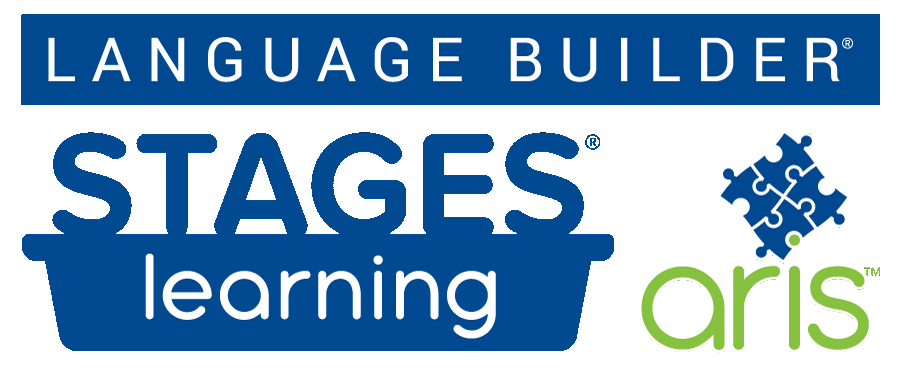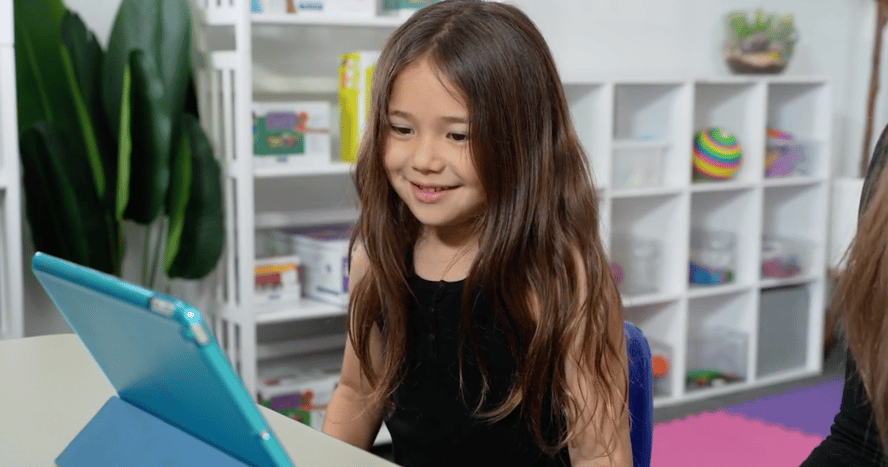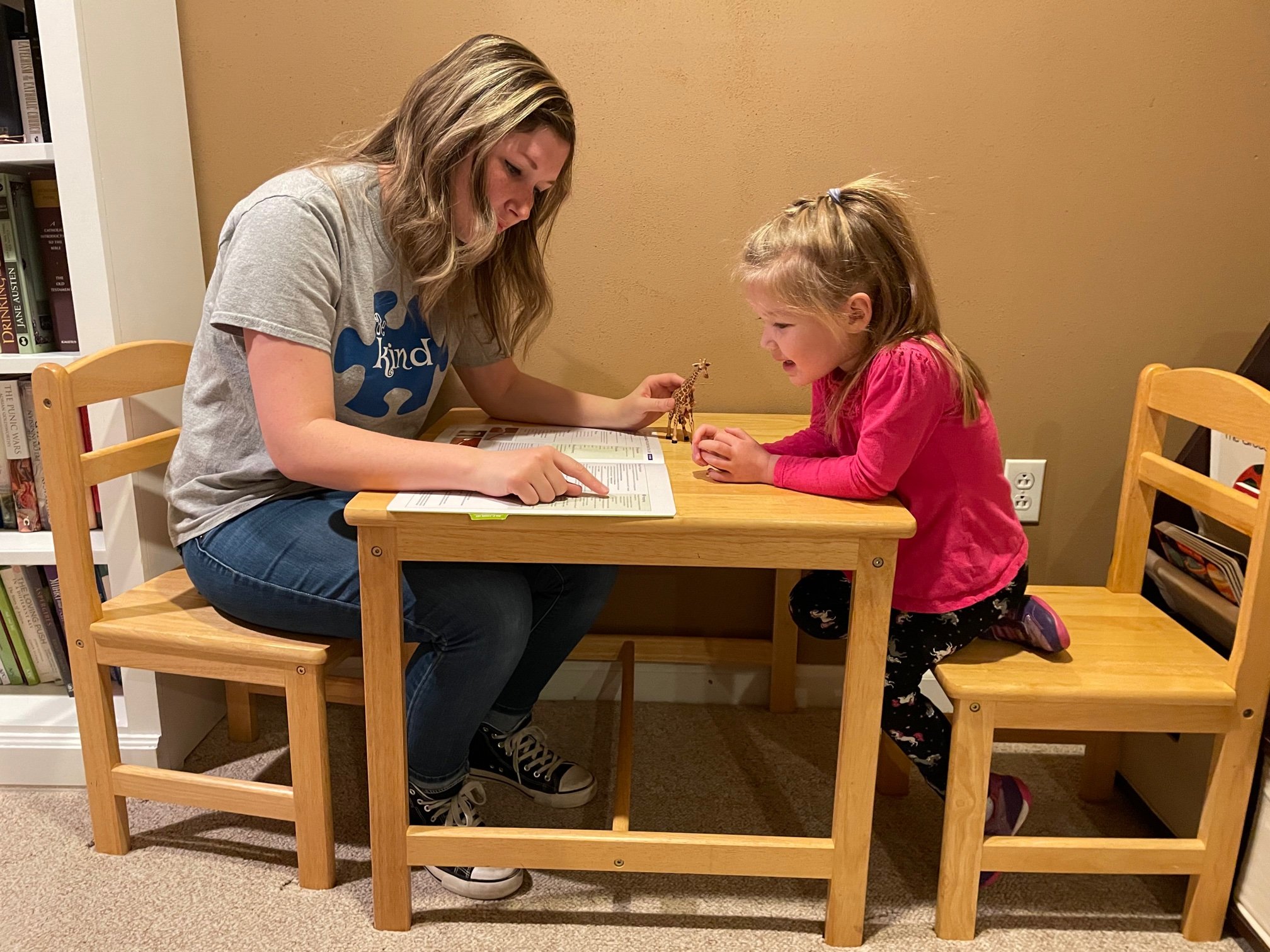
A Special Ed Teacher and New Stages Learning Staffer Takes a Peek Under the Hood of Our New ARIS Early Autism Curriculum
I’m not a Board Certified Behavior Analyst (BCBA), but I know “just enough to be dangerous.”
I am aware of all of the tremendous benefits of using applied behavior analysis (ABA) in order to develop intentional and systematic programming for autistic students. A school rather than a clinical setting can make it a challenge to use ABA techniques like discrete trial training (DTT). Most teachers and support staff have never heard of ABA, let alone how to implement it. When I have tried to use more “clinical techniques,” I’ve found training has always been a challenge because there is often new staff coming through from year to year or even semester to semester.
What’s a teacher to do?
That’s where I’ve found the ARIS® Academic Readiness Intervention System lesson folders to be so incredibly helpful!
✔ My lesson planning, done!
✔ My alignment to standards and assessments, done!
✔ My teaching protocols, done!
✔ My data sheets, done!
You get the idea; I’ve shared my excitement for ARIS before, but I want to get down to the nitty-gritty of why I’m in love with the lessons (all 202 of them). Life is easier when the work is already done—we always get to work smarter, not harder!

Folder design
This might seem like something to brush over, but it’s actually super handy to have every lesson as a folder, especially considering the back side of every folder is a data sheet that corresponds to the type of skill covered in the lesson. It’s also made so you can write directly on the folder with an erasable marker; I can have information right there and transfer it later to my electronic version. It’s handy to have pre-made data sheets physically attached to the lesson, but I also like the option to copy the data sheet and tuck it inside the folder with the target photos, especially if I have more than one student working on that lesson at the same time.
Lesson Planning
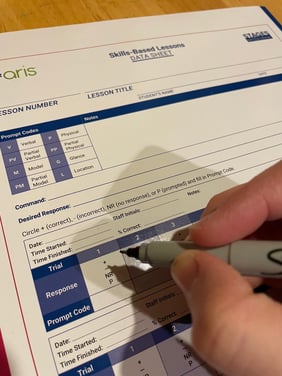 In my district, it’s expected that all students work on skills that are tied to state standards—even if they take the Dynamic Learning Measurement (DLM) instead of the Measures of Academic Performance (MAP) test. Sometimes when I’m teaching at such varied levels and abilities, it’s hard to know whether I’m just presenting a lesson because it’s attractive to look at, or if it’s really intentional and beneficial for the students’ learning. The lessons include a tie to standards for Head Start, Common Core, ABLLS-R, and VB-MAPP. As a teacher, it gives me peace of mind to know I’m maintaining high standards for all my students.
In my district, it’s expected that all students work on skills that are tied to state standards—even if they take the Dynamic Learning Measurement (DLM) instead of the Measures of Academic Performance (MAP) test. Sometimes when I’m teaching at such varied levels and abilities, it’s hard to know whether I’m just presenting a lesson because it’s attractive to look at, or if it’s really intentional and beneficial for the students’ learning. The lessons include a tie to standards for Head Start, Common Core, ABLLS-R, and VB-MAPP. As a teacher, it gives me peace of mind to know I’m maintaining high standards for all my students.
I don’t know about you, but planning a week ahead sometimes gets me in a disorganized panic. Thankfully, there’s a place on each folder with the days of the week where I can physically write in my plan for the week, and that helps keep me from making things up on the spot and keeps my teaching deliberate.
Procedures and Lesson Progression
This is the highlight in my mind for the ARIS lessons. Before I was a special educator, I was a general elementary teacher. While there are other challenges for teachers in general education, MAN do I miss having those scripted lessons. I still personalized the teaching, but it was nice to have an idea of what to say if it was a content area that I wasn’t super confident with. As soon as I became a special educator I thought, “What do I even say?!” Because special education is so individualized, it is indeed rare to find tools or curricula that really lay out the steps and language for you.
Under the procedures section, the lesson is actually spelled out like a task analysis. Everything and every step is clearly outlined so I can make sure I’m using the right language.--And the lesson progression can help take me from the student starting at square one with some skill all the way to mastery. If the teacher or staff picking up the lesson have never heard of terms like mass trial, random rotation, or errorless teaching, it doesn’t matter because every step is in layman’s terms so you may not even realize that you’re “doing ABA.” The best part about the explicit layout of the procedures and lesson progression is that it’s a ready-made training tool for whenever we do get fully staffed! HA!
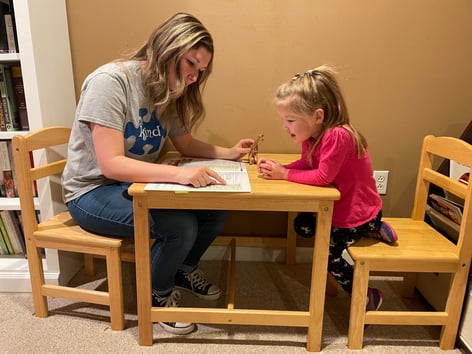
Prompting Procedures
Speaking of training, the level of prompting is something I think gets covered over and over. We’re always looking for ways to give the smallest level of prompt to result in success for the student. For some people and for some lessons, intuition correctly tells what the prompting should look like, but that’s not always the case. Each of the ARIS lessons has multiple specific examples of how to prompt the student for that skill. It’s a great reminder for me and a fantastic reference guide for anyone working with the student on that lesson.
Inclusion
Our goal in all settings is to help autistic students find enduring and broad success, not just during table time. Unfortunately, without intentionality, we can inadvertently do just the opposite. When looking at an assessment like the VB-MAPP, we sometimes see only the skills without thinking of the big picture. The ARIS lessons plan ahead for you with specific information and examples of how to generalize skills across staff members and settings. Further, there is a special section called “Whole-Child Lesson Ideas” that provides examples of how the student can work on that skill in a general education setting. So many times, general educators want to collaborate and support autistic students but they’d like to know more about how to help them work on skills applicable to their programming. Whole-child lessons can be a way to bridge that gap, build inclusion, and promote generalization. And in ARIS, they are often fun to do!
Wrap Up
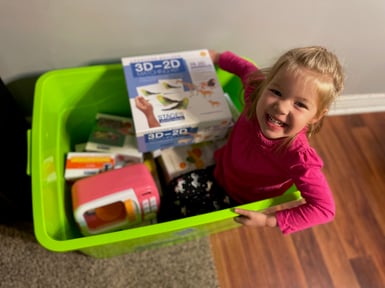 The folders have other helpful things like pre-requisite skills sections, teacher tips, and a guide to which specific materials you’d need to teach the lesson—and oh yeah, remember they’re included in the ARIS kit, thank you!!—but I wanted to highlight the things that are included in each lesson that make me so excited about using these materials and helping so many autistic students that I know both professionally and personally.
The folders have other helpful things like pre-requisite skills sections, teacher tips, and a guide to which specific materials you’d need to teach the lesson—and oh yeah, remember they’re included in the ARIS kit, thank you!!—but I wanted to highlight the things that are included in each lesson that make me so excited about using these materials and helping so many autistic students that I know both professionally and personally.
Knowing that I am correctly using evidenced-based procedures in teaching means a lot to me. I feel like I’m constantly learning new things about how to be more deliberate in teaching skills to students, from simply how to approach me to doing basic math.
Are there any ABA strategies you would like to learn more about and/or implement in your setting?
And, if you have used ARIS -- as many teachers across the country are starting to do -- what do you like about it?
Lastly, before you go, click below to see a video of ARIS in action! Learn more about using ARIS with teletherapy in our article titled, "Teletherapy and Autism: It's Working!"
